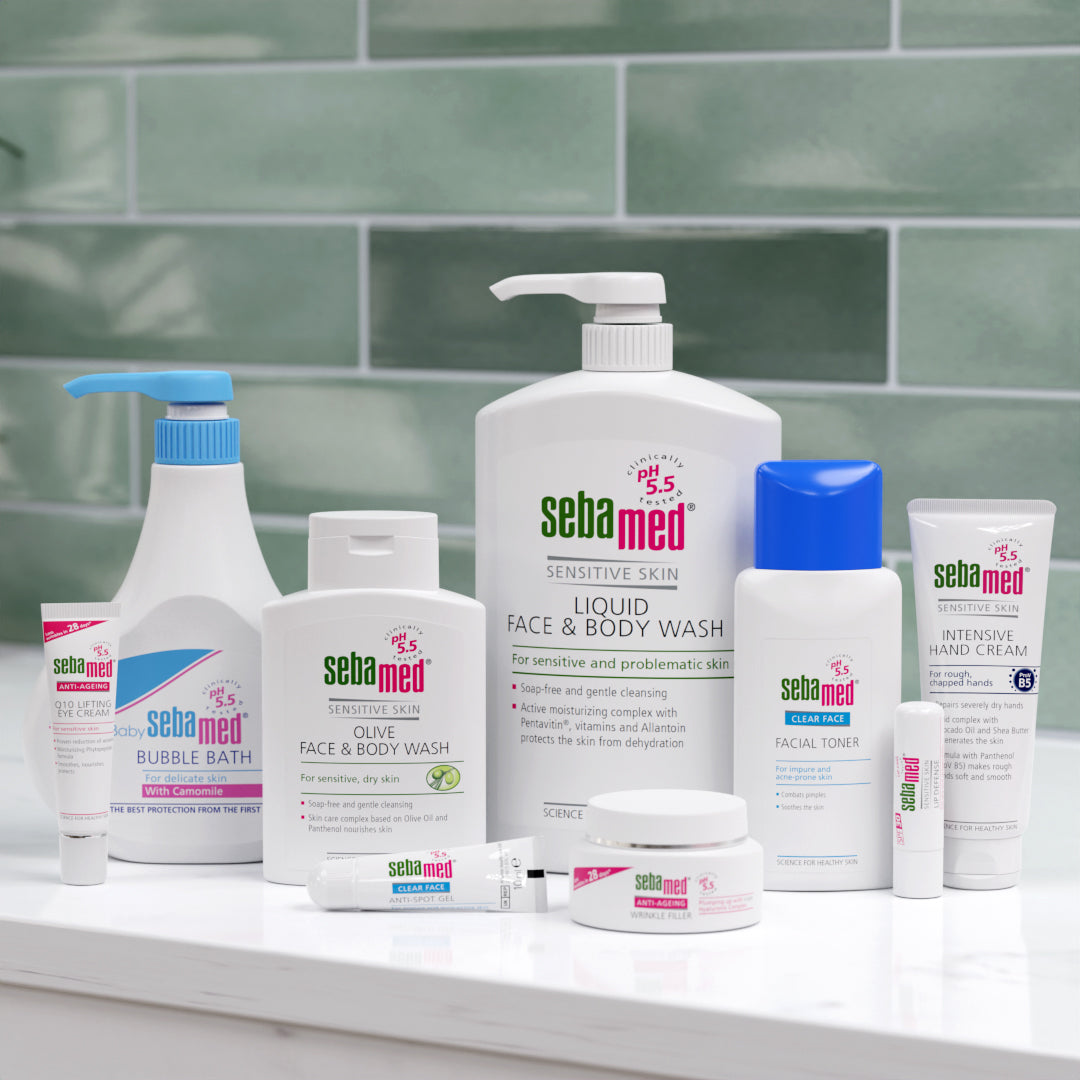Acne is a common skin condition that develops on the face, back and chest. Acne is caused when the tiny sebaceous glands on the surface of your skin become blocked.
The role of sebaceous glands is to lubricate hair and your skin to stop it from drying out by producing sebum. The sebaceous glands are particularly sensitive to testosterone production, which can encourage excess sebum production.
When the glands produce too much sebum, the excess mixes with dead skin cells and forms a plug in the sebaceous glands. This is what causes whiteheads and blackheads to appear on the skin. They can also interact with bacteria, leading to nodules, cysts and papules.
Although acne is such a common skin condition, it remains widely misunderstood by many; Acne has many myths surrounding the origins and possible “cures” - let's debunk 3 common acne myths.
Myth 1: Only Teenagers get Acne
The idea that acne is exclusive to teenagers is one of the most widespread myths. Although most teenagers will experience some form of acne due to the hormonal changes they go through, many adults will still experience acne.
For many, especially those who menstruate, fluctuating testosterone levels will still impact sebum production, triggering acne breakouts. Furthermore, those who go through menopause have reported a drop in acne flare-ups when their oestrogen and progesterone levels drop during this period.
Finally, genetics can play a part at any age. If your parents developed acne as adults, you’re likely to experience adult acne too.
Myth 2: Acne is Caused by Dirty Skin
This can be one of the most harmful myths surrounding acne due to the shame it carries for many. Although gentle cleansing can help to reduce bacteria from your face, it’s unlikely to entirely cure acne. In fact, over-cleansing can cause more harm than good, as this can dry out your skin, encouraging even more sebum production.
As discussed, acne is linked to excess sebum production, which is perceived as “oil”. Instead of going overboard with face washing and using harsh cleansers, instead, look to gentle soap-free cleansers that help to manage excess sebum production. Sebamed Clear Face Anti-Bacteria Cleansing Foam provides gentle pore deep, antibacterial cleansing without drying out the skin.
Myth 3: You Should Pop Your Pimples
Say it with us: soothe don’t squeeze! No matter how safe and clean you think you are being when you pop your pimples, the potential risks are never worth it.
If you are a picker or popper, every time you go to war with your pimples, you trigger inflammatory responses which make them even harder to heal. Additionally, whether you are using your fingers or special tools, you are still running the risk of introducing bacteria into what is now an open wound. All of this can cause acne scars that don’t go away easily.
However, we know it never feels great to have an angry pimple on your face. By using a spot treatment, such as sebamed Clear Face Anti-Pimple Gel, you can provide fast relief to irritation, as well as inhibit bacteria growth whilst pimples and blackheads dry out.
Acne is often a long-term condition which can cause a lot of discomfort and self-esteem issues. However, it is entirely normal and natural to experience. With these acne myths busted you can start to live your best life in the knowledge that you are more than your skin.
If you’d like to support your acne-prone skin, sebamed offers a range of pH 5.5 products that inhibit acne-causing bacteria whilst supporting the skin’s natural barrier function against dryness and irritation. You can shop our dermatologically tested Clear Face range here.






